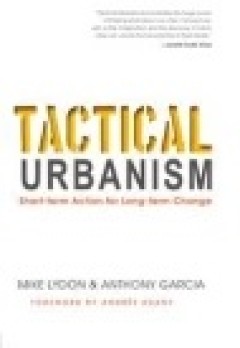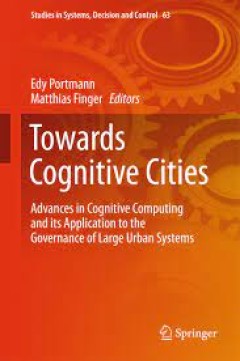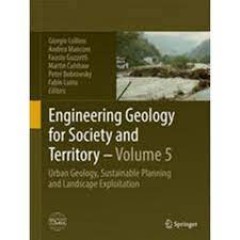Filter by

Tactical Urbanism
Tactical Urbanism, written by Mike Lydon and Anthony Garcia, two founders of the movement, promises to be the foundational guide for urban transformation. The authors begin with an in-depth history of the Tactical Urbanism movement and its place among other social, political, and urban planning trends, and a detailed set of case studies demonstrate the breadth and scalability of tactical urbani…
- Edition
- -
- ISBN/ISSN
- 978-1-61091-567-0
- Collation
- XXII, 230
- Series Title
- -
- Call Number
- -

Towards Cognitive Cities
This book introduces the readers to the new concept of cognitive cities. It demonstrates why cities need to become cognitive and why therefore a concept of cognitive city is needed. It highlights the main building blocks of cognitive cities and illustrates the concept by various cases. Following a concise introductory chapter the book features nine chapters illustrating various aspects and dime…
- Edition
- 1
- ISBN/ISSN
- 978-3-319-33798-2
- Collation
- XVII, 215
- Series Title
- Studies in Systems, Decision and Control
- Call Number
- -

Engineering Geology for Society and Territory - Volume 5 Urban Geology, Sust…
This book is one out of 8 IAEG XII Congress volumes, and deals with the theme of urban geology. Along with a rapidly growing world population, the wave of urban growth continues, causing cities to swell and new metropolitan centers to emerge. These global trends also open new ventures for underground city development. Engineering geology plays a major role in facing the increasing issues of the…
- Edition
- -
- ISBN/ISSN
- 978-3-319-09048-1
- Collation
- 132 b/w illustrations, 616 illustrations in colour
- Series Title
- -
- Call Number
- -

Nature Policies and Landscape Policies:Towards an Alliance
The book focuses on the relationship between nature conservation policies and landscape policies. This is a relevant subject due to the current need of reviving nature conservation policies, which are today affected by a general effectiveness deficiency. To this end, landscape policies can play a crucial role, bridging nature and culture, fostering more integrated approaches to nature conservat…
- Edition
- 1
- ISBN/ISSN
- 978-3-319-05409-4
- Collation
- XXX, 497
- Series Title
- Urban and Landscape Perspectives
- Call Number
- -

Emergent Spatio-temporal Dimensions of the City Habitus and Urban Rhythms
This book focuses on the creation of space as an activity. The argument draws not only on aspects of movement in time, but also on a cultural and specifically social context influencing the creation of the spatial habitus. The book reconsiders existing theories of time and space in the field of urban planning and develops an updated account of spatial activity, experience and space-making. Rece…
- Edition
- 1
- ISBN/ISSN
- 978-3-319-09849-4
- Collation
- 41 b/w illustrations, 80 illustrations in colour
- Series Title
- -
- Call Number
- -

Emergent Nested Systems A Theory of Understanding and Influencing Complex Sy…
This book presents a theory as well as methods to understand and to purposively influence complex systems. It suggests a theory of complex systems as nested systems, i. e. systems that enclose other systems and that are simultaneously enclosed by even other systems. According to the theory presented, each enclosing system emerges through time from the generative activities of the systems they e…
- Edition
- 1
- ISBN/ISSN
- 978-3-319-27550-5
- Collation
- 8 b/w illustrations, 98 illustrations in colour
- Series Title
- -
- Call Number
- -
 Computer Science, Information & General Works
Computer Science, Information & General Works  Philosophy & Psychology
Philosophy & Psychology  Religion
Religion  Social Sciences
Social Sciences  Language
Language  Pure Science
Pure Science  Applied Sciences
Applied Sciences  Art & Recreation
Art & Recreation  Literature
Literature  History & Geography
History & Geography